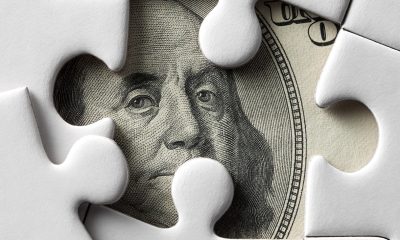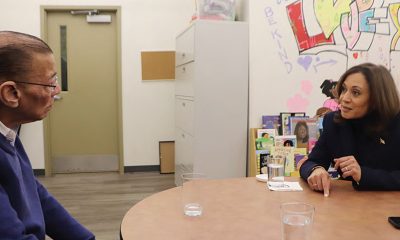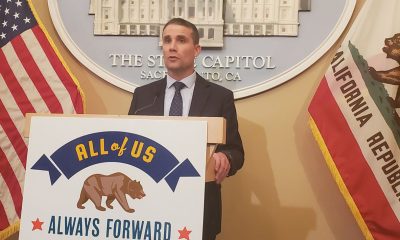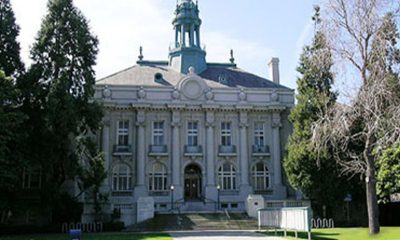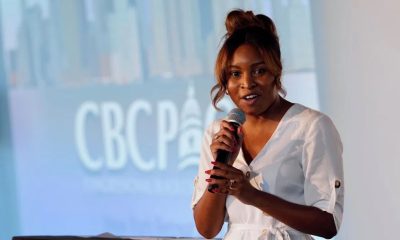Business
What’s on the Economic Horizon for Black America in 2015?
by Starla Muhammad
Special to the NNPA from The Final Call
(FinalCall.com) – While the overall economic picture generated optimism for some last year, as the country heads into 2015 a majority of low and middle income Black, Brown and poor Americans still suffer from financial struggles carried over from the Great Recession.
President Barack Obama, at his end of year press conference, spoke of the creation of 11 million new jobs by businesses over a 57-month period. These gains are the result of steps taken early on by this administration to rescue the economy, said the president.
“Almost all the job growth that we’ve seen has been in full-time positions. Much of the recent pickup in job growth has been in higher-paying industries. And in a hopeful sign for middle-class families, wages are on the rise again,” said Mr. Obama to reporters Dec. 19.
According to the White House, the “U.S. economic recovery took a major step forward in 2014, achieving a number of important milestones.”
In its “Year in Review: Creating Economic Opportunity for all Americans in 2014,” among accomplishments the administration touted:
November, 2014 was the best year of job growth since 1999.
Fifteen thousand jobs were added by the manufacturing sector.
The U.S. has the highest graduation rate on record and more Americans earning post-secondary degrees than ever.
The U.S. was on top as the leading oil and gas producer globally.
There was a continued rise in home prices which cut the number of upside down mortgages from a peak of 14 million to less than 4 million.
Ten million Americans are now insured under the Affordable Care Act and there is a slower rate of rising health care costs.
The federal deficit has been cut by nearly two-thirds.
Additionally, overall unemployment rates continued to fall, averaging in single digits while oil prices decreased globally, meaning lower prices at gas pumps for American consumers.
Growth during the last two quarters for the nation’s Gross Domestic Product (GDP), which is the goods and services consumers purchase, is one economic indicator analysts used when looking at the overall health of the economy noted economist Dr. Julianne Malveaux explained to The Final Call. The third quarter reflected an increase in GDP of 5 percent, according to the U.S. Commerce Department. Personal income increased $54.4 billion, or 0.4 percent, disposable personal income increased $42.4 billion, or 0.3 percent, private wages and salaries increased $38.7 billion and goods-producing industries’ payrolls increased $7.3 billion all in November, according to the department’s Bureau of Economic Analysis. Government wages and salaries also increased $1.8 billion.
“People are poised to spend. At the same time, there is a clear divide between the top and the bottom,” said Dr. Malveaux.
Uneven economic recovery
“You have this bifurcation that says the economy is doing very well and you have people that are saying, ‘but what about me?’ Of course when White America experiences some discomfort, Black America experiences extreme discomfort,” said Dr. Malveaux.
“If I were to summarize the year 2014 there have been macro-economic gains like GDP growth, etc., and micro-economic stagnancy, if not reversals. And so it has not been a stellar year for African Americans. There is vulnerability here in our community that we can’t ignore.”
Blacks continued to make up disproportionately high numbers of the unemployed, lagged behind in income equality and housing disparities and other socio-economic areas in comparison to Whites.
Double digit unemployment continued to plague Black America in 2014. In the final numbers released by the U.S. Department of Labor for November 2014, the overall unemployment rate was 5.8 percent or 9.1 million people out of work. The rate for Blacks was 11.1 percent, for Whites 4.9 percent and for Latinos 6.6 percent. December’s numbers will be released in early January 2015.
“While you see a lower unemployment rate the employment population ratio, which means the percentage of people who are actually working, for White men that number is nearly 70 percent, for Black men the number does not clear 60 percent,” said Dr. Malveaux.
If it’s wealth you see less, if it’s poverty you see more among Blacks, said Dr. Malveaux, president emerita of Bennett College for Women.
Several reports and analysis released in 2014 reflected continued gaps in key areas.
According to talkpoverty.org, in 2013, there were 11 million Blacks in poverty, the equivalent of 27 percent of the overall poverty rate. The Black child poverty rate stood at 38.3 percent. Blacks currently make up between 12-13 percent of the U.S. population.
Much of the wealth accumulated over the last five years has been stock market gains because the Dow has gone up alongside acceleration in housing values. But few Blacks invest in the stock market and a greater percentage of Whites own their homes compared to Blacks, said Dr. Malveaux.
After the real estate bubble burst, home values finally began to stabilize between 2010 and 2013 but at a rate slower for Blacks. Between those years inflation-adjusted median home values fell by 4.6 percent for White households and 18.4 percent for Black households, according to an October report by the Economic Policy Institute, a Washington D.C.-based think tank.
Also, the Federal Reserve has artificially kept interest rates low which impacts the Black community, said Dr. Malveaux. “They’ve kept rates low to stimulate employment. Raising interest rates makes it more difficult for businesses to borrow and therefore more difficult for businesses to hire.”
Many businesses have borrowed but the effect has not trickled down to the masses, she explained.
Asians have fully recovered from the recession; Whites have about 90 percent of what they had before the recession, Latinos have 60 percent and Blacks have 50 percent, added Dr. Malveaux.
More of the same?
Income, asset ownership and the state of Black business are key areas that must be analyzed in determining the progress of Black people, said Cedric Muhammad, an economic strategist, analyst and author of “The Entrepreneurial Secret.” “On those three measures I would say things are more pessimistic,” he told The Final Call.
The Pew Research Center released a mid-December report stating that the wealth of White households was 13 times the median wealth of Black households in 2013, compared to eight times the wealth in 2010.
The median wealth of Black households fell to $11,000 in 2013 compared to Whites which actually increased from $138,000 to $141,000 during the same years.
The median income of Whites is also nearly double that of Blacks.
There are over 2 million Black-owned businesses in the U.S. but only 100,000 of those businesses have more than one paid employee.
“If you look at percentages and ratios none of those is an improvement over our historic deficit with White Americans,” said Mr. Muhammad. He referred to “A Torchlight for America,” a book by the Honorable Minister Louis Farrakhan of the Nation of Islam which pointed out the rate of gain it would take Blacks to completely close the gap in income with Whites. “It shows it would take 400 years for us to completely close the gap,” said Mr. Muhammad.
Dr. Malveaux expects more of the same or worse in 2015 especially now that Republicans have gained control of both houses of Congress. They will be freer to explore their policies that have been hostile to the people at the bottom, she said.
“While they have increased the amount of money that corporations can give to campaigns and to PACs (Political Action Committees), consolidating power among the wealthy, they have been very parsimonious when it comes to benefits and assistance to people at the bottom.”
She expects the GOP to make cuts which will disproportionately affect Blacks like SNAP benefits, formerly known as the federal food stamp program. She expects fewer federal Pell grants to be made available which is the method many poor people rely on to pay for college.
“We can expect to see some erosion of Black economic status. I don’t see anything, and I could be wrong and I hope I am, that suggests anyone is focused on the well-being of African American people. The Congressional Black Caucus has certainly been episodically effective … but they’re an extreme minority. It has been challenging for them to influence public policy,” said Dr. Malveaux.
Changes in public policy, regulations or legislation that would benefit or work for those who continue to struggle in the GOP-dominated Congress are unlikely, she added.
“There is no reason for them to do anything than what they’ve always done which is take it from the needy to give it to the greedy.”
Black people must begin to build wealth through asset, business ownership and land acquisition and not be distracted from focusing on real economic indicators, said Cedric Muhammad.
Viable solution at hand
Like his teacher the Honorable Elijah Muhammad, Minister Farrakhan has consistently stressed the critical need for Black people to “Do for self or suffer the consequences.” Other communities have demonstrated this principle to their benefit.
Collective economic power enables residents in various ethnic enclaves to control the politics and affairs of their communities.
With over $1 trillion in spending power for over 45 million Black people in America that is often talked about, strategic economic targeting of where that money is spent is key to progress.
In his enlightening online lecture series, “The Time and What Must Be Done,” Min. Farrakhan spoke to this very issue.
“Did you know six cents of every dollar is all we spend with Black Businesses? And according to one study made by the Gazelle Index, a national quarterly survey of CEOs of high performing small businesses and businesses owned by diverse groups, if we double what we spend to 12 cents, that alone would create nearly 600,000 additional jobs for Black workers, and would reduce the Black unemployment rate by more than three points (from 13.8 percent to 10.6 percent),” said Min. Farrakhan.
“Don’t tell me ‘we don’t have the power!’ We just have never used it wisely,” he continued. Under the Muslim leader’s direction, the Nation of Islam reintroduced Muhammad’s Economic Blueprint, a program designed to help end poverty and want in the Black community. The program calls for 16 million wage earning Blacks to contribute 35 cents weekly to purchase farmland and help create industry and businesses to begin providing jobs. Such a small amount of painless sacrifice would net over $291 million in one year.
“Today guess what, collectively, we are still richer than 19 countries in the world. Just think about how rich you and I are. That’s why if we support in this year 2015, Muhammad’s Economic Blueprint, it’s only $1.40 a week, it’s only $18.40 a year. But collectively we would have a national treasury that we could begin to get land, because America is for sale,” Ishmael R. Muhammad, student national assistant to Min. Farrakhan and a son of the Honorable Elijah Muhammad told the audience at Mosque Maryam, in a Dec. 28 address.
The program would be a mechanism to buy up the empty lots and abandoned buildings and put young Black people to work to renovate these buildings put them back on the market to provide decent housing to the people, said student Minister Ishmael Muhammad.
“Let’s open up the grocery stores that are missing in these food deserts. It’s not on government to do it for us it’s on us to do it for ourselves.”
For more information on Muhammad’s Economic Blueprint, visit www.economicblueprint.org.
Bay Area
Mayor Breed Proposes Waiving City Fees for Night Markets, Block Parties, Farmers’ Markets, Other Outdoor Community Events
Mayor London N. Breed introduced legislation on April 26 to encourage and expand outdoor community events. The first will waive City fees for certain events, making them less costly to produce. The second will simplify the health permitting for special event food vendors through the creation of an annual permit. Both pieces of legislation are part of the Mayor’s broader initiative to bring vibrancy and entertainment to San Francisco’s public right of ways and spaces.

Mayor’s Press Office
Mayor London N. Breed introduced legislation on April 26 to encourage and expand outdoor community events.
The first will waive City fees for certain events, making them less costly to produce. The second will simplify the health permitting for special event food vendors through the creation of an annual permit. Both pieces of legislation are part of the Mayor’s broader initiative to bring vibrancy and entertainment to San Francisco’s public right of ways and spaces.
Outdoor community events are integral to San Francisco’s vibrant culture and sense of community. These events include night markets, neighborhood block parties and farmers markets, and bolster the City’s economy by supporting local businesses and attracting tourists eager to experience San Francisco’s unique charm and food scene.
They offer residents, workers and visitors, opportunities to engage with local artists, musicians, and food vendors while enjoying the San Francisco’s stunning outdoor spaces and commercial corridors.
The legislation will allow for more and new community gatherings and for local food vendors to benefit from the City’s revitalization.
“San Francisco is alive when our streets are filled with festivals, markets, and community events,” said Breed. “As a city we can cut fees and streamline rules so our communities can bring joy and excitement into our streets and help revitalize San Francisco.”
Fee Waiver Legislation
The events that can take advantage of the new fee waivers are those that are free and open to the public, occupy three or fewer city blocks, take place between 8 a.m. and 10 p.m., and have the appropriate permitting from the ISCOTT and the Entertainment Commission.
The applicant must be a San Francisco based non-profit, small business, Community Benefit District, Business Improvement District, or a neighborhood or merchant association. Fees eligible for waiver include any application, permit, and inspection/staffing fees from San Francisco Municipal Transportation Agency, Department of Public Health, Fire Department, Entertainment Commission, and Police Department.
Currently, it can cost roughly anywhere between $500-$10,000 to obtain permits for organized events or fairs, depending on its size and scope. Organizations and businesses are limited to a maximum of 12 events in one calendar year for which they can receive these fee waivers.
Food Vendor Streamlining Legislation
The second piece of legislation introduced will help special event food vendors easily participate in multiple events throughout the year with a new, cost-effective annual food permit. Food vendors who participate in multiple events at multiple locations throughout the year will no longer need to obtain a separate permit for each event. Instead, special event food vendors will be able to apply and pay for a single annual permit all at once.
“Many successful food businesses either begin as pop-up vendors or participate in special events to grow their business,” says Katy Tang, Director of the Office of Small Business. “Giving them the option for an annual special event food permit saves them time and money.”
Currently, food vendors are required to get a Temporary Food Facility (TFF) permit from the Department of Public Health (DPH) in order to participate in a special event, among permits from other departments.
Currently, each special event requires a new permit from DPH ranging from $124-$244, depending on the type of food being prepared and sold. Last year, DPH issued over 1,500 individual TFF permits. With the new annual permit, food vendors selling at more than four to six events each year will benefit from hundreds of dollars in savings and time saved from fewer bureaucratic processes.
“This legislation is a step in the right direction to make it easier for food vendors like me to participate in citywide events,” said Dontaye Ball, owner of Gumbo Social. “It saves on time, money and makes it more effective. It also creates a level of equity.”
Bay Area
Faces Around the Bay: Sidney Carey
Sidney Carey was born in Dallas, Texas. He moved with his family to West Oakland as a baby. His sister is deceased; one brother lives in Oakland. Carey was the Choir Director at Trinity Missionary Baptist Church for 18 years.
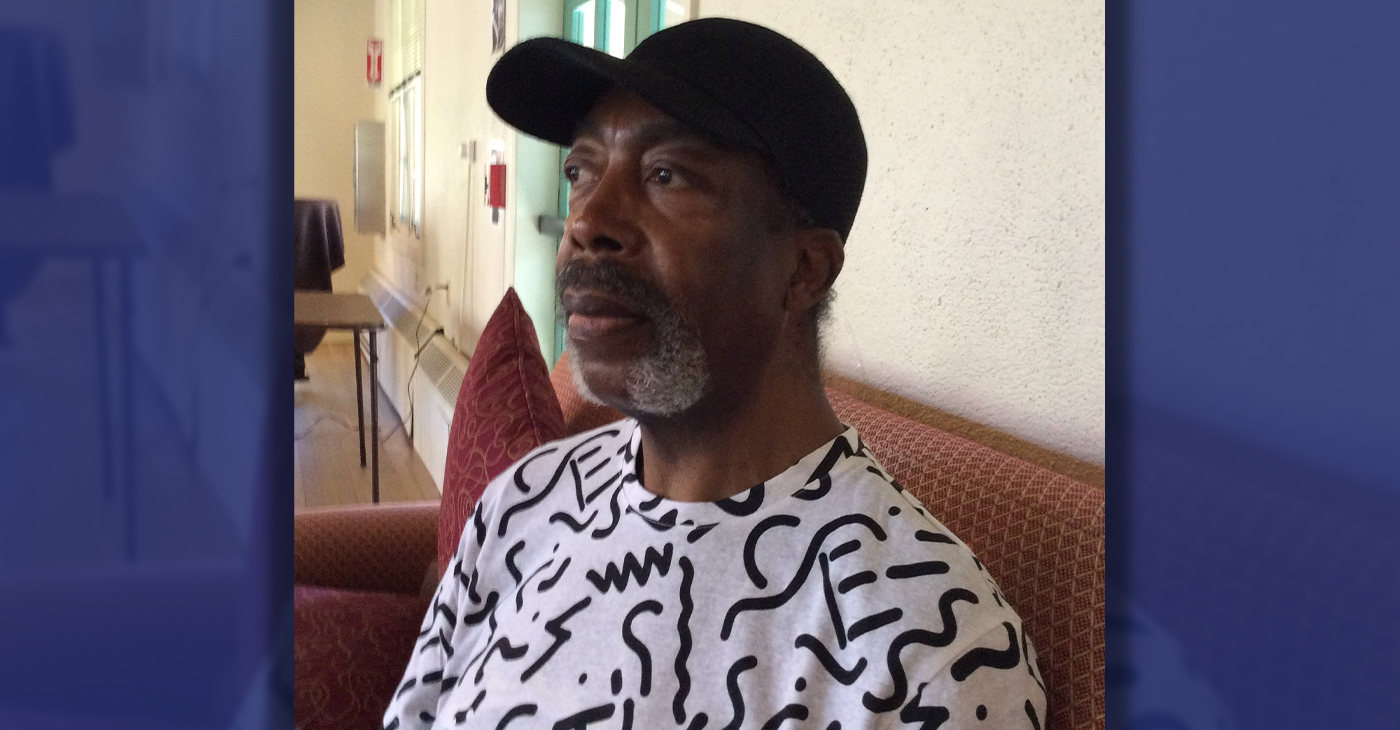
By Barbara Fluhrer
Sidney Carey was born in Dallas, Texas. He moved with his family to West Oakland as a baby. His sister is deceased; one brother lives in Oakland.
Carey was the Choir Director at Trinity Missionary Baptist Church for 18 years.
He graduated from McClymonds High with a scholarship in cosmetology and was the first African American to complete a nine-month course at the first Black Beauty School in Oakland: Charm Beauty College.
He earned his License, and then attended U.C., earning a secondary teaching credential. With his Instructors License, he went on to teach at Laney College, San Mateo College, Skyline and Universal Beauty College in Pinole, among others.
Carey was the first African American hair stylist at Joseph and I. Magnin department store in Oakland and in San Francisco, where he managed the hair stylist department, Shear Heaven.
In 2009, he quit teaching and was diagnosed with Congestive Heart Failure. He was 60 and “too old for a heart transplant”. His doctors at California Pacific Medical Center (CPMC) went to court and fought successfully for his right to receive a transplant. One day, he received a call from CPMC, “Be here in one hour.” He underwent a transplant with a heart from a 25-year- old man in Vienna, Austria
Two years later, Carey resumed teaching at Laney College, finally retiring in 2012.
Now, he’s slowed down and comfortable in a Senior Residence in Berkeley, but still manages to fit his 6/4” frame in his 2002 Toyota and drive to family gatherings in Oakland and San Leandro and an occasional Four Seasons Arts concert.
He does his own shopping and cooking and uses Para Transit to keep constant doctor appointments while keeping up with anti-rejection meds. He often travels with doctors as a model of a successful heart-transplant plant recipient: 14 years.
Carey says, “I’m blessed” and, to the youth, “Don’t give up on your dreams!”
Business
Maximizing Your Bank Branch Experience
In a world of online tools that let you make banking transactions with the touch of a button, the idea of visiting a branch might seem unnecessary. However, if you haven’t visited your local branch recently, you might be surprised by what it has to offer. Your branch is much more than a place to deposit and withdraw money – it can offer the opportunity to build valuable relationships with people who can help you achieve financial independence.
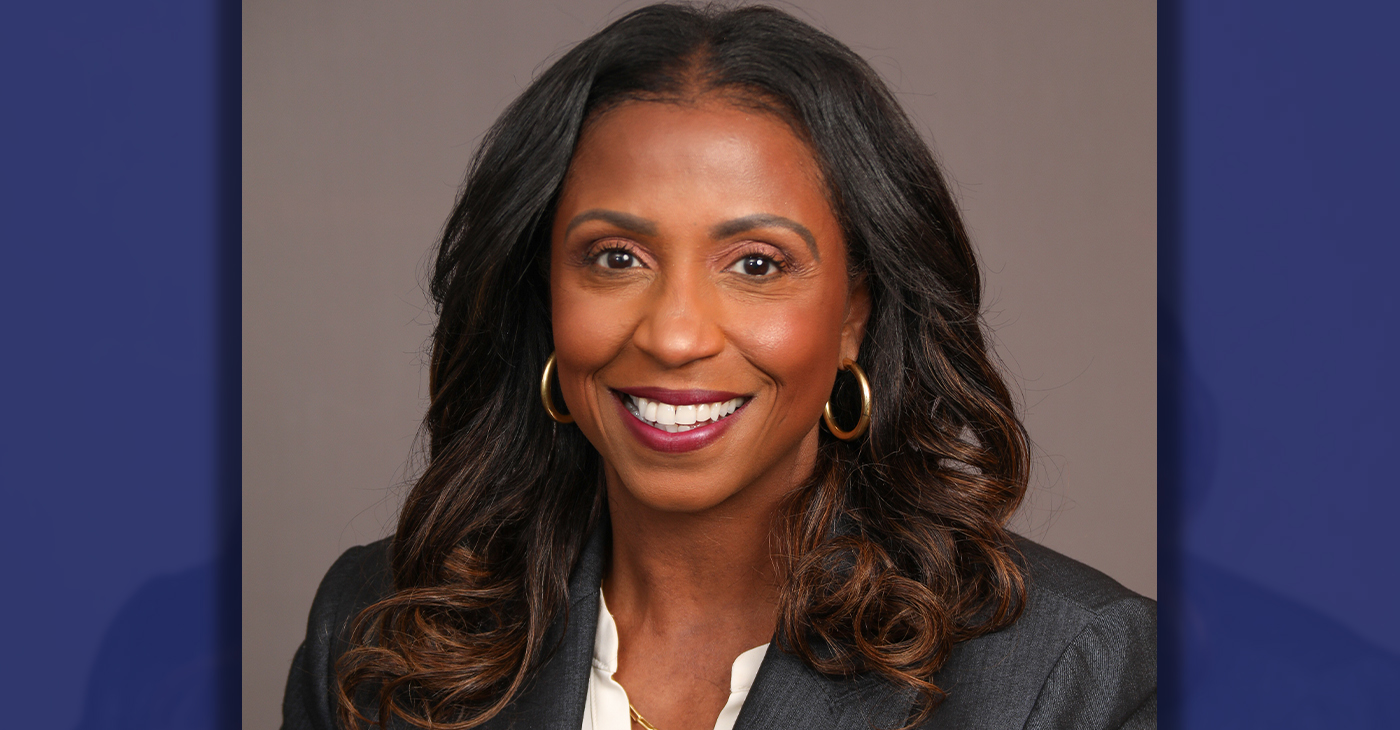
Sponsored by JPMorgan Chase & Co.
In a world of online tools that let you make banking transactions with the touch of a button, the idea of visiting a branch might seem unnecessary.
However, if you haven’t visited your local branch recently, you might be surprised by what it has to offer. Your branch is much more than a place to deposit and withdraw money – it can offer the opportunity to build valuable relationships with people who can help you achieve financial independence.
Diedra Porché, Head of Community and Business Development at Chase, talks about how the bank model has evolved to maximize the branch experience for customers; how connecting with your local branch team can help you think differently about money and investing for your future.
How can a customer feel connected to a bank branch?
I love that question because we ask ourselves the same thing every day. Being part of the community means meeting with local leaders to find out what they need from us and then designing our branches around that. For example, at some of our community branches we have what we call a living room where we can host financial workshops, small business pop-up shops or nonprofit organization meetings. We also hire locally. You feel much more connected talking about financial aspirations with people from your community who went to the same high school, place of worship or maybe frequented the same recreation center down the street when they grew up.
How can I build a relationship with my bank?
Customers should feel comfortable sharing their goals, needs and wants with their banker. Also, it helps to remember the Community Manager is there to help solve your finance challenges and build a roadmap for success. You might have a short-term or long-term goal to open a business, build your credit, become debt-free, buy a home, or save for retirement, and our community team can help. At Chase, we strive to make dreams possible for everyone, everywhere, every day. Your financial future starts with building those relationships.
How can customers change negative perceptions they have about managing their money?
Far too often, customers are intimidated when they visit a bank. Our goal is to demystify banking and money myths empowering people to make the right decisions. For example, a big myth is assuming you need a lot of money to have a bank account. You don’t! Another myth is you need to carry a balance on your credit card to build credit — actively using your credit card can demonstrate that you can use credit responsibly but carrying a balance won’t necessarily improve your credit score. Finally, understanding mobile and online banking safety is key. There are so many safeguards and protections in place to guard your personal information and funds.
What’s an easy step one can take to shift their financial behavior right now?
Cultivating self-awareness is a good first step. Start by taking inventory of your spending. Be honest with yourself about what you need and what you want. Too often, people confuse the two, which leads to bad decisions. Rent is something you need to pay. An extra pair of shoes is something you may want but before you buy them ask yourself if that’s the best use of your hard-earned money. Too often, our beliefs and our fears shape our financial realities. If any of those beliefs are limiting your financial behavior, it’s important to question and examine them, and then decide you’re open to learning something different.
What’s one perception about banking that you’d like to change?
I think folks are surprised there are so many resources available and accessible both at our branches and online, it’s always a good idea to visit a nearby branch and speak to a Community Manager or banker. Outside of what we offer in-branch, our teams also work with local neighborhood partners who provide a variety of services to support the community, businesses and residents. I received a unique piece of feedback from an employee who started with the bank and had lived in the same community his whole life. When he visited his local community branch, he said, “Diedra, when I walked in, I felt dignified.” Every time I recount that story, it warms my heart because that’s what we want — we want our centers to belong to the community.
-

 Community3 weeks ago
Community3 weeks agoFinancial Assistance Bill for Descendants of Enslaved Persons to Help Them Purchase, Own, or Maintain a Home
-

 Business3 weeks ago
Business3 weeks agoV.P. Kamala Harris: Americans With Criminal Records Will Soon Be Eligible for SBA Loans
-

 City Government4 days ago
City Government4 days agoCourt Throws Out Law That Allowed Californians to Build Duplexes, Triplexes and RDUs on Their Properties
-

 Activism4 weeks ago
Activism4 weeks agoOakland Post: Week of April 10 – 16, 2024
-

 Activism2 weeks ago
Activism2 weeks agoOakland Post: Week of April 24 – 30, 2024
-

 Community3 weeks ago
Community3 weeks agoAG Bonta Says Oakland School Leaders Should Comply with State Laws to Avoid ‘Disparate Harm’ When Closing or Merging Schools
-

 Community3 weeks ago
Community3 weeks agoRichmond Nonprofit Helps Ex-Felons Get Back on Their Feet
-

 Community3 weeks ago
Community3 weeks agoOakland WNBA Player to be Inducted Into Hall of Fame



